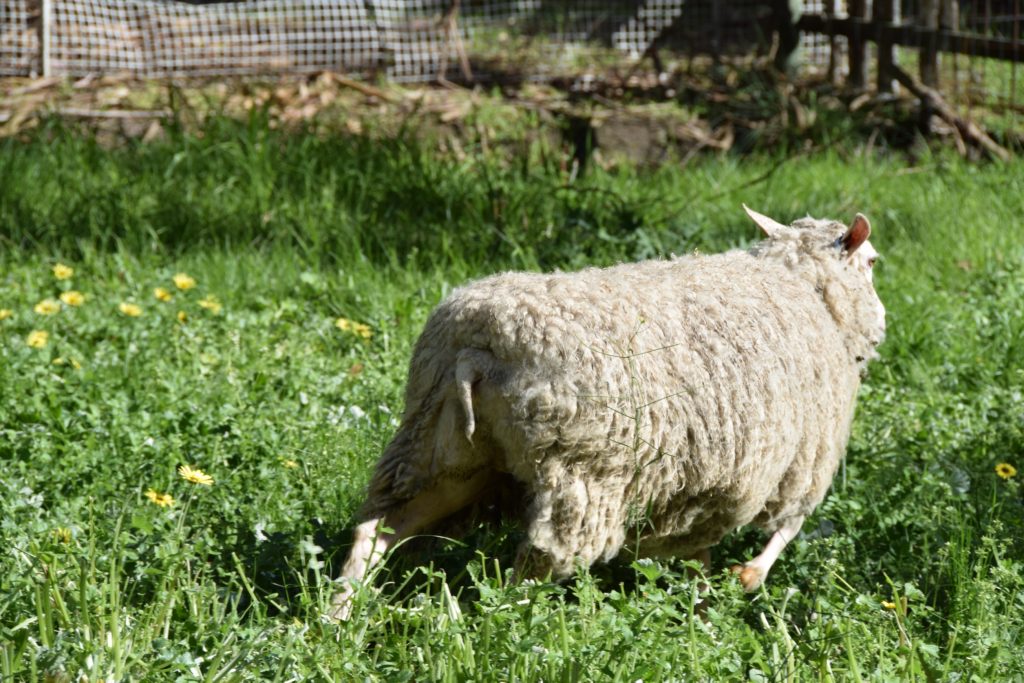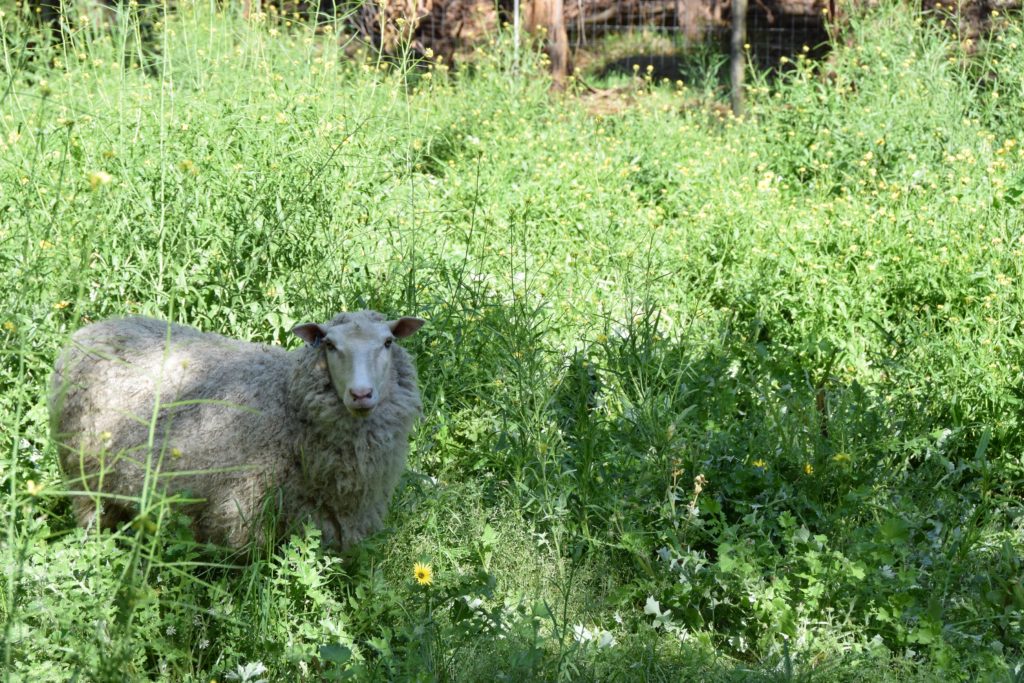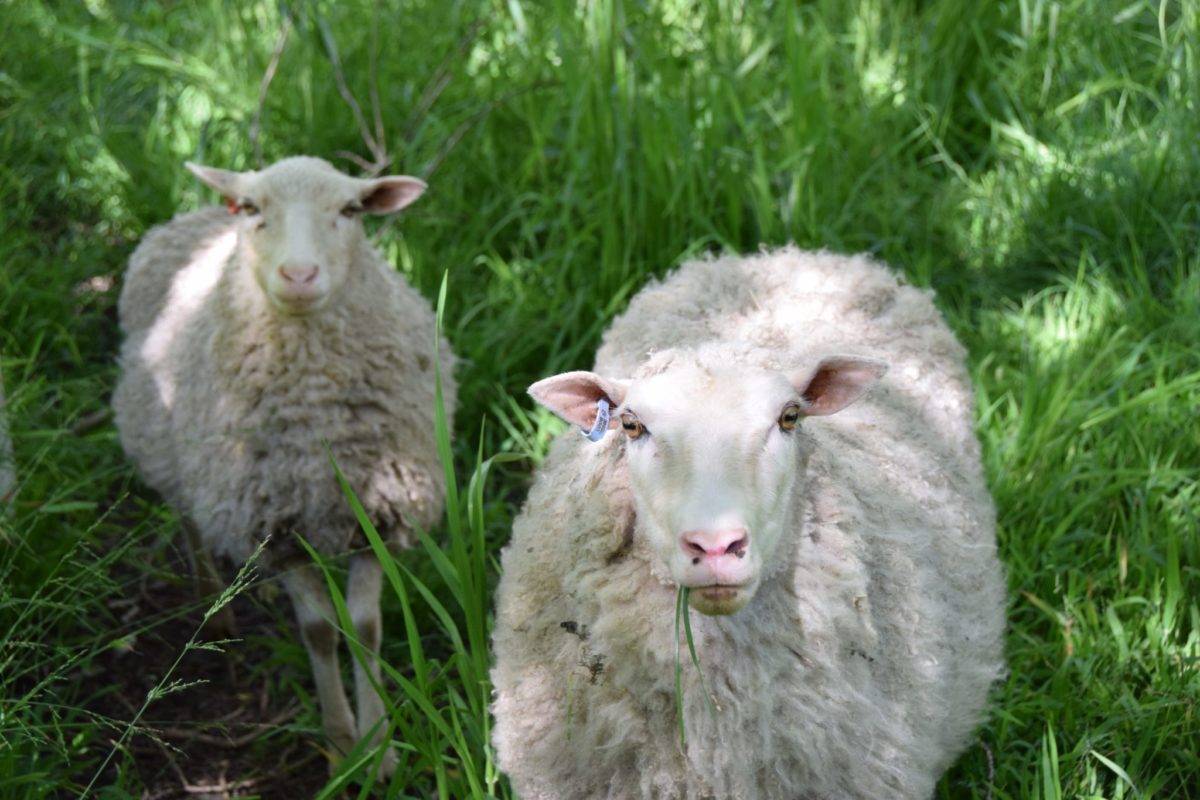Our first animals have arrived on the farm! Lydia and Kitty (named after the precocious younger sisters in Pride and Prejudice) are Finn sheep. We brought them back from Bullengarook in a trailer I borrowed from my grandparents. It was an adventure! We tied a tarp over the trailer to help shelter them from the wind and the pouring rain. Then drove them through the city in peak hour. What a great idea 😉
Matt had great fun drenching the ewes before we loaded them up. He called himself ‘the sheep whisperer’ for at least three days afterwards. I think he was just pleased to be able to pick the sheep up and manhandle them into the trailer- he has a well founded fear of livestock that are larger than he is.
Excuse me while I get nerdy about why Finn sheep are great. They’re originally from Finland, and are predominantly used as a wool sheep. Their fleeces are lustrous, with a micron diameter of around 22-28 micron. The fleeces are in high demand for hand spinning and felting.
The Finns are also bred to meat breeds for first crosses that have a lean carcass and high bone out percentage. We love a dual purpose animal, so we’ll be using these Finns in a breeding project.

Why choose Finns for breeding? The main draw for me is ethical. Finns have a clean face, breech, legs and tails. Short, clean tails means that we will not have to dock their tails. This is a must for any breed I will keep long term. The clean breech and legs means further reducing the risk of fly strike. To me they are a much better choice of wool sheep than merinos, because of these two factors.
Another advantage of Finns are their reproductive rates. They are early maturing sheep, capable of breeding from 4 months of age. Best practice is to wait until they are at least a year old to breed, leading to higher lamb survival rates. But as part of their early fertility, they also breed year round. This means that provided adequate nutrition Finn Ewes can have three pregnancies in two years.
Finns are also well known for multiple births. Not only twins or triplets, but also quadruplet and quintuplets. This was heavily selected for in the original breed. With winter being extraordinarily cold in Finland, only a handful of ewes were sheltered and fed over winter. Their large breeding potential was necessary to rebuild numbers each year.
Having so many lambs in a breeding project is obviously a huge example. The larger numbers of lambs we have, the easier to select for the traits that we want. Our ewes should become better breeders and mothers each year until they are around five years old.
Kitty is two years old. She was born a triplet, and had twin lambs last year at only a year old. Both were born healthy, but one died the first night The other was strong and is still going. She has a lovely crimped fleece that we will shear and sell around December.
Lydia is only a year old. She hasn’t lambed before. However, she was born as one of five. Yes, five. Only three of the lambs survived, with two of the smaller ones becoming stuck in the floor of the shed and dying over night. We hope that over a couple of years she will pass the fertility of her mother into our sheep lines.

Finn sheep happily eat both grass and forbs. They are also browsers though. They seem happy eating various weeds. Our happy sheep are currently knee deep in pasture, jumping onto their back legs to delicately nibble the tops of the dandelions in their paddock. Maureen at Fairfield Finns (where we purchased the girls) assures us they’ll munch up any blackberries on the property too. Now if only they ate thistle!



I really enjoyed this article! I’m a rookie shepherd, with mostly Finnsheep. I got them for many of the same reasons you did. Interestingly, I found my Finns will eat thistles, but I have to cut them, and let them lay a couple days. Blessings!
Thanks Dale! That’s quite interesting – very handy if there are plenty of thistles around 🙂